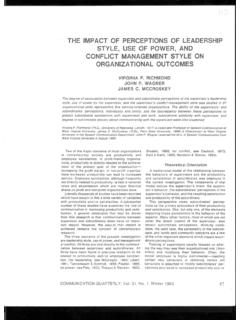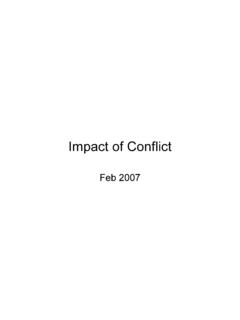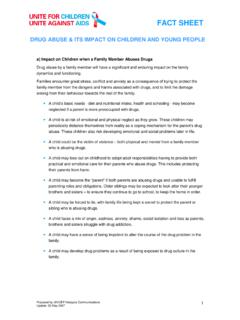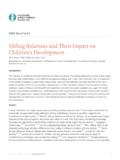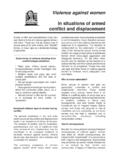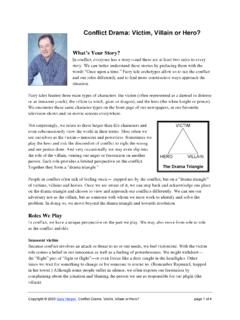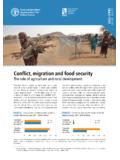Transcription of Defining Conflict Resolution - …
1 Defining Conflict Resolution Carolyn Manning a. How would you define Conflict Resolution ? b. How is it related to peacemaking? c. Can Conflict Resolution always be fair/just to all parties? Abstract: This paper will consider the meaning of the term " Conflict Resolution ." The differences between " conflicts " and "disputes" will be examined, together with what is required to settle or manage Conflict . The focus of this paper will be on interpersonal Conflict . After Defining "peace" it will be argued that Conflict Resolution is not an entirely satisfactory form of peacemaking. It will be argued that Conflict Resolution processes such as mediation do not always lead to fair and just outcomes for all parties.
2 In analysing Conflict Resolution it is appropriate to define firstly " Conflict " and then " Resolution ". While it is acknowledged that Conflict occurs at many levels, from interpersonal disputes to clashes between countries, the focus of this essay will be at the interpersonal level. The term " Conflict " has been used to describe a broad range of human activities including hostility between people to international war. The traditional notion of Conflict as a "fight, struggle or clash of principles" (Oxford Dictionary, 1976) is unsatisfactory because interpersonal disputes are rarely about a clash of principles. Coser (1967, cited in Moore, 1996) has defined Conflict more broadly as a "struggle between two or more people over values, competition for status, power or scarce resources ( ).
3 " Wertheim, Love, Peck and Littlefield (1998) view Conflict as occurring when there are real or perceived differences in interests ( wants, needs, fears, concerns) that cannot be simultaneously satisfied. Tillet (1991) believes Conflict manifests when the needs and values of two or more parties are incompatible. It can be argued that Conflict has its origins in objective and subjective causes such as competition for external resources ( power, land or status) or it can arise when there is a clash between the internal beliefs, values, and interests of two parties. Authors such as Moore (1996) and Tillet (1998) perceive Conflict as occurring at various levels of consciousness.
4 These commentators distinguish between latent Conflict - characterised by underlying and sometimes unacknowledged tensions and emerging Conflict - where the dispute is acknowledged and the parties are identified - but a process for resolving the dispute has yet to emerge - and manifest conflicts where the parties engaged in the dispute have reached an impasse despite attempts at Resolution . At this stage the Conflict is overt and individuals can pursue Resolution through legal action, mediation, negotiation or physical or verbal violence. There is debate as to whether it is useful to distinguish between conflicts and disputes. Tidwell (1998) regards conflicts and disputes as part of the same continuum with the main differentiating factor being that conflicts tend to be of greater intensity than disputes and are less subject to negotiation.
5 Tillet (1991) highlights the differences between conflicts and disputes by drawing attention to the contrasting sources of tension. He argues that disputes occur when there are competing interests or goals whereas Conflict has its origins in fundamental differences in human values and needs. An interesting consideration arising from this issue is whether solutions in the form of Resolution or settlements represent the desired outcome for both conflicts and disputes. If the cause of the problem differs between conflicts and disputes as it does in some cases, so may the preferred outcome and approach to managing or solving the problem. For instance, an estranged couple arguing over the distribution of property may simply require a settlement to this problem.
6 However, a couple who seek relationship counselling because of marital difficulties may benefit from Conflict Resolution strategies aimed at identifying the underlying sources of tension in the relationship. Such a strategy "deals with the total human being" (1998, Burton, cited in Tillet, 1991, ) by addressing the values and motivations that fuel the Conflict as opposed to simply addressing a symptom of the problem. Similarly, the concept of " Conflict Resolution " is also open to many interpretations. On one hand, Conflict Resolution can be regarded as any process that resolves or ends Conflict via methods which can include violence or warfare. Alternatively, it can be viewed as a non-violent process that manages Conflict through compromise, or through the assistance of a third party who either facilitates or imposes a settlement or Resolution .
7 Conflict Resolution processes are many and varied and can be seen on a continuum ranging from collaborative, participatory, informal, non-binding processes (such as mediation, conciliation, third party negotiation) to adversarial, fact-oriented, legally binding and imposed decisions that arise from institutions such as the courts and tribunals (Boulle, 1996). Typically, non-adversarial practices such as mediation, negotiation, arbitration and conciliation are practices which have been associated with Conflict Resolution or alternate dispute Resolution (ADR) procedures rather than adversarial institutions such as courts and tribunals where a settlement is imposed on the disputants by an external authority (Boulle, 1996).
8 In contrast mediation, conciliation or negotiation are activities that facilitate communication between participants who are seeking to resolve their differences in a cooperative way. Some commentators such as Wertheim et al (1998) and Fisher and Ury (1996) believe that the key to resolving Conflict is to focus on interests rather than positions, which is the solution one party seeks to impose on another. Burton (1986, cited in Tidwell, 1998) has argued that Resolution between two parties in Conflict can only occur when "relationships have been re-examined and realigned" ( ). Although this form of Resolution may by regarded by some as more desirable it is not always practicable.
9 Resolution in cases of marital separation or divorce can in some cases simply mean the settlement of an outstanding property dispute rather than the "realignment of relationships." The "transformation" of relationships may be an ideal pursued by a third party who is intervening on behalf of the disputants, but it is not necessarily the goal of the disputants who may simply desire a solution to their problem. Laue (cited in Charles Sturt University, 1998) has argued that Conflict can only be considered resolved if the following conditions are met: The solution jointly satisfies the interests and needs of the parties via joint agreement. The solution does not compromise the values of either party.
10 The parties do not repudiate the solution even if they have the power to do so following the settlement. The solution is fair and just and becomes self-supporting and self-enforcing. Although this form of Resolution seems ideal because it aims to achieve an enduring outcome it is not always practicable in situations where the relationship between two parties is severely strained or when there is no ongoing relationship to be maintained. In such situation parties in Conflict will often attempt to maximise their gains at the expense of the other through the negotiation or bargaining process (Boulle, 1996). To summarise, Conflict Resolution can be viewed as a problem solving process which is designed to offer parties an opportunity to resolve their differences collaboratively.
